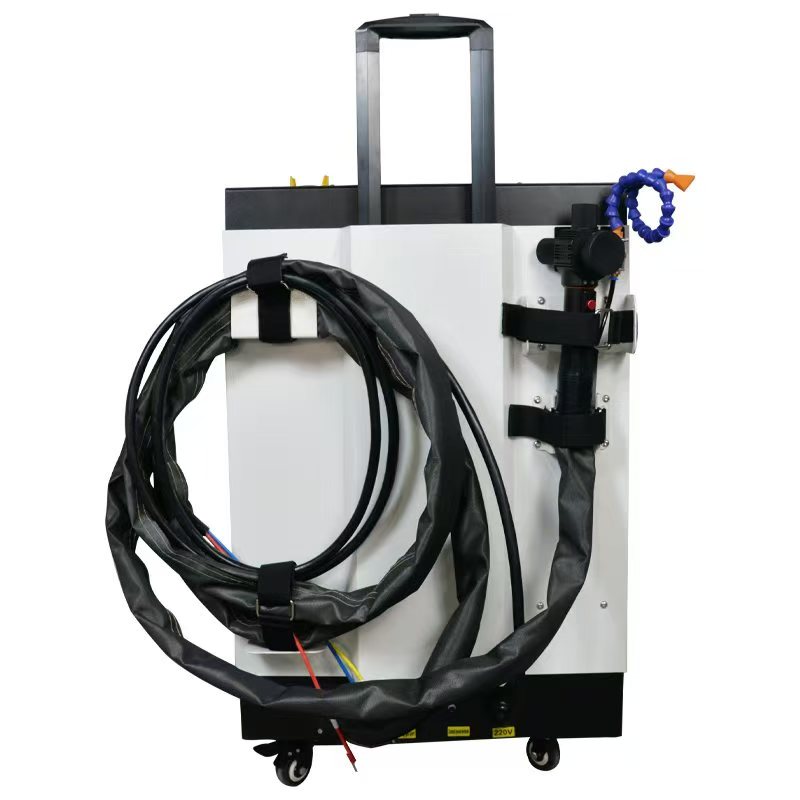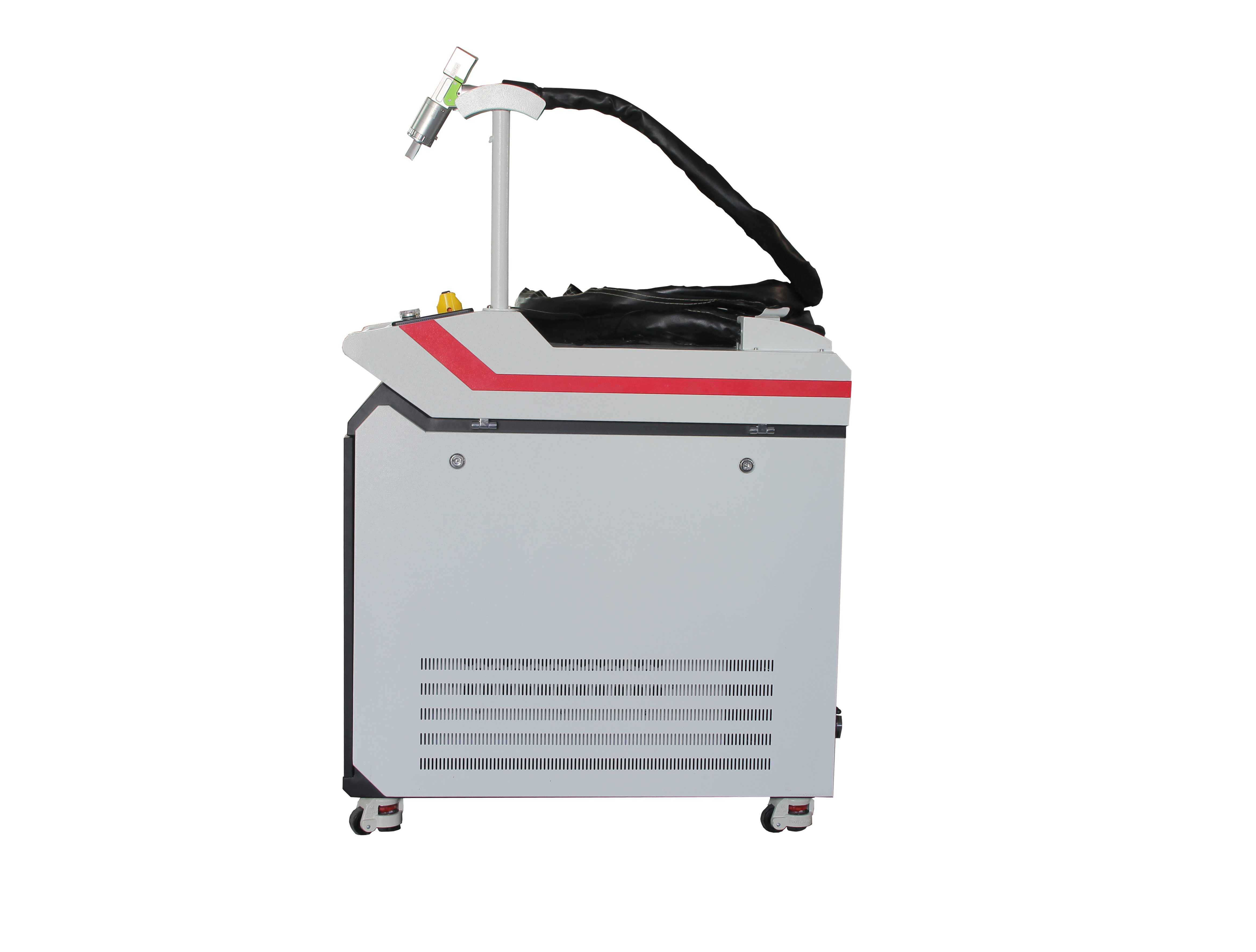
Main Performance Parameters of Lasers (1) -- Wavelength
01 Definition of wavelength
The laser wavelength represents the wavelength of the electromagnetic waves carried by the laser. Compared to other types of light, an important feature of lasers is that they are monochromatic, meaning their wavelength is very pure and has only a single distinct frequency. This is because factors such as the gain medium and excitation methods used in the laser can restrict photons to vibrate at only one specific wavelength. The specific value of a laser's wavelength depends on factors such as the laser's structure and the materials used. For different applications and requirements, lasers of different wavelengths can be selected to achieve the desired functions. For example, in fields such as environmental monitoring, communications, medical treatments, and materials processing, lasers of different wavelengths are chosen based on different media and reflection properties.
Differences in laser wavelengths:
The wavelength of red lasers generally ranges from 630nm to 680nm. The light they emit is red and is the most common type of laser, mainly used in medical illumination devices.
Green lasers typically have a wavelength around 532nm and are primarily used in laser ranging applications.
Blue lasers generally have a wavelength between 400nm and 500nm and are mainly used in laser surgery and engraving.
Ultraviolet lasers have wavelengths between 350nm and 400nm, primarily used in biomedical and material processing fields.
Infrared lasers are the most special. Depending on their wavelength range and application area, infrared laser wavelengths generally fall between 700nm and 1mm. The infrared band can be further divided into three sub-bands: near-infrared (NIR), mid-infrared (MIR), and far-infrared (FIR). Near-infrared wavelengths range approximately from 750nm to 1400nm and are widely used in fiber optic communications, biomedical imaging, and infrared night vision devices. Mid-infrared wavelengths range roughly from 1,400nm to 10,000nm and are commonly employed in detection and analysis, spectroscopy, and thermal imaging. Far-infrared wavelengths range from about 10,000nm to 1mm and are applied in remote control, remote sensing, and semiconductor manufacturing.
It is important to note that the light emitted by lasers has a single wavelength, which means optically, laser light is a highly focused beam with an energy density much higher than beams of other wavelengths. Because lasers can be focused to very small points, they have wide-ranging applications in many fields, including manufacturing, medical treatment, and communications. Therefore, researching and controlling laser wavelengths is one of the core aspects of laser technology and applications.
02 Wavelength Classification
Laser wavelengths are divided into central wavelength and peak wavelength, which differ significantly in definition and properties.
1. Central Wavelength
The central wavelength refers to the central position of the wavelength distribution of the laser output, also known as the average wavelength or central frequency. It indicates the central position of the laser wavelength distribution and can be measured using sensors or spectrometers in the laser output. The central wavelength can be calculated by measuring λ2, which corresponds to the long wavelength at 50% of the maximum relative spectral intensity, and λ1, corresponding to the short wavelength at 50% of the maximum relative spectral intensity; then subtracting λ1 from λ2 and dividing the result by 2 gives the central wavelength.
In spectral analysis, the central wavelength is one of the indicators used to describe the characteristics of laser wavelength. For lasers with a single wavelength, the central wavelength is equal to the laser's peak wavelength. However, for lasers with a wavelength distribution, the central wavelength corresponds to the centroid of the wavelength distribution curve. The central wavelength is usually expressed in units such as nanometers (nm) or picoseconds (ps). The central wavelength of a laser is an important parameter for assessing the properties of laser output wavelength and has significant application value in many fields. For example, in optical communications, lasers of different wavelengths are used for implementing multi-wavelength discrete wavelength division multiplexing (WDM) technology, and the central wavelength is an important parameter for evaluating lasers of different wavelengths. In fields such as laser medicine and laser processing, the central wavelength of a laser also plays a crucial role in determining the characteristics and mode of action of the laser.
2. Peak Wavelength
The peak wavelength refers to the wavelength position on the output wavelength distribution curve with the maximum output power, also known as the maximum power wavelength. In spectral analysis, the peak wavelength is an important parameter of the laser wavelength. To measure the peak wavelength, a monochromator, spectrometer, or wavelength meter is required to identify the laser's peak wavelength. The measurement is typically repeated ten times or more, and the total value is calculated, then multiplied by the peak wavelength of the laser's main spectral line and divided by the number of measurements to obtain the peak wavelength. For a single-wavelength laser, the peak wavelength is the laser's wavelength. However, for lasers with a broader wavelength distribution, the peak wavelength may lie within a wider portion of the wavelength distribution curve, so it does not fully represent the laser's wavelength characteristics. For such lasers with a broader wavelength distribution, their wavelength characteristics need to be described using other parameters of the wavelength distribution curve, such as the central wavelength and full width at half maximum (FWHM).
In many application fields, the peak wavelength of a laser is very important for determining the wavelength at which laser processing should be carried out. For example, in laser cutting, different materials require lasers of different wavelengths for cutting, which necessitates selecting the appropriate laser peak wavelength based on the characteristics of the material and the properties of the laser.
03 Wavelength-Related Important Performance Characterization Parameters
The bandwidth, linewidth, side-mode suppression ratio, and spectral width of a laser are performance parameters of the laser. These parameters are used to describe the frequency or wavelength distribution range of the laser output and are important indicators for evaluating the performance and application capabilities of the laser.
Among them, bandwidth and linewidth are used to describe the distribution range and stability of the laser output signal in terms of frequency, and are mainly applied in fields such as optical communication and optical measurement.
Spectral width is used to describe the monochromaticity and narrowness of the output light of a laser, and is mainly applied in fields such as optical guidance and laser medicine.
The magnitudes and requirements of these laser performance parameters vary according to different application fields and demands, so precise control and adjustment are necessary in laser applications and designs.
Bandwidth refers to the range of frequencies contained within a certain wavelength range. In the field of communication, bandwidth usually refers to frequency bandwidth, which is the extent of a signal's spread in frequency. Because wavelength and frequency are reciprocally related, there is also a corresponding definition of wavelength bandwidth in optical communication. In digital communication, bandwidth is generally used to measure the effective data transmission rate of a communication channel. The wider the bandwidth, the faster the data transmission rate. In wireless communication, bandwidth is also a factor that needs to be considered, as bandwidth limitations can affect the transmission speed and range of wireless signals. In fiber optic communication, the wavelength bandwidth usually refers to the data transmission rate that a single wavelength can carry.
Line width refers to the range of wavelengths in the output light of a laser in terms of frequency or energy, also called spectral line width. A laser's wavelength bandwidth can be measured using an interferometer. An interferometer works on the principle of using the interference phenomenon of light waves to measure the properties of light. When two beams of light intersect, interference fringes are produced. By analyzing the pattern of these fringes, information such as the phase and frequency of the light waves can be obtained. By directing a laser beam into an interferometer, the laser wavelength bandwidth can be calculated based on characteristics such as the width and shape of the interference fringes. A spectrometer can also be used to measure the laser wavelength bandwidth. By directing a laser beam into a spectrometer, the spectral curve of its output can be obtained. Based on the width and shape of the spectral curve, the laser wavelength bandwidth can be calculated. In spectroscopy, the spectral line width is the full width of the peak, indicating the broadening of the light's frequency difference over time and space. The narrower the laser wavelength line width, the more concentrated the laser spectrum is and the better the monochromaticity. Line width is related to the characteristics of the laser itself, such as the length of the laser cavity, reflectivity, and properties of the laser medium. Additionally, the laser wavelength line width can be influenced by environmental factors of the laser, such as changes in laser current and temperature. Line width is a very important parameter of laser output light and is crucial for many applications, such as optical communication, data storage, laser medicine, photonics, and optical measurements. Therefore, in order to achieve a narrow line width laser, it is necessary to choose a high-quality laser and a stable working environment, and to adopt appropriate control measures, such as heaters and feedback control.
Spectral width refers to the range of wavelengths of light output by a laser. Broadly speaking, it refers to the range of the spectral distribution along the wavelength axis. Since the light produced by a laser is usually monochromatic, its spectral distribution is very narrow, and therefore the spectral width is generally very narrow as well, typically on the nanometer or sub-nanometer scale. The spectral width of the laser wavelength is the difference between the longest wavelength corresponding to 50% of the maximum relative spectral intensity and the longest wavelength corresponding to 50% of the prominent relative spectral intensity. The spectral width of a laser wavelength is mainly determined by factors such as the characteristics of the laser resonator and the laser medium, and it is generally a fixed value. However, in practical applications, the output wavelength of a laser can be influenced by factors such as the laser’s temperature, pump power, and current. These factors can cause changes in the laser resonator length or the refractive index of the medium, thereby affecting the spectral width of the laser wavelength. In optical communications, it is required that the laser's spectral width be as narrow as possible to achieve high-speed transmission. In applications such as laser spectroscopy and optical guidance, precise control and adjustment of the laser's spectral width are necessary.
Side Mode Suppression Ratio (SMSR) refers to the ratio between the main mode peak and the side mode peak in the laser output wavelength, used to evaluate the purity and monochromaticity of the laser output. The main mode peak is the strongest frequency component of the laser output, while the side mode peak is the frequency component next to the main mode peak in the laser wavelength distribution curve. The higher the side mode suppression ratio, the better the monochromaticity of the laser output, and the lower the output power of the side mode component. The formula for calculating the side mode suppression ratio is as follows: SMSR = 10 × log10 (Pmain / Pside), where Pmain is the optical power of the main mode peak, and Pside is the optical power of the side mode peak next to the main mode. Therefore, the larger the value of the side mode suppression ratio, the better the laser's monochromaticity, and the smaller the output power of the side mode component. If a laser's main mode peak power is 1 mW and the side mode peak power next to the main mode is 10 μW, its side mode suppression ratio is 10 × log10 (1/0.01) = 20 dB. This means that the side mode power is only about 1% of the main mode power, and the laser output is a high-quality single-mode laser.




Post time: 11-07-2025





